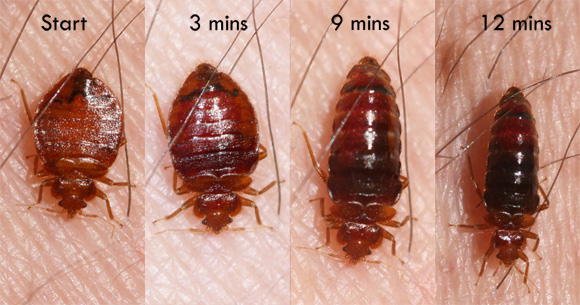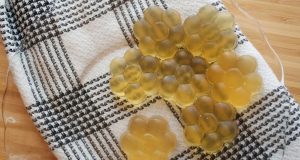Bed Bugs may have evolved from cave-dwelling ectoparasites of mammals (especially bats). As humans moved from caves to tents and then into houses, the bugs went with them.

Adult bugs are 6–7 mm long, broadly oval, flat, brown to reddish-brown true bugs, with a 3-segmented beak, 4-segmented antennae, and vestigial wings. They have dorso-ventrally flattened bodies covered with short, golden-colored hairs.
Bed bugs feed only on the blood of mammals or birds and mate by traumatic insemination.Active at night, female bed bugs lay white eggs in batches of 10 to 50 on bedding and in cracks and crevices. Under favorable conditions one adult female can lay as many as 200-250 eggs over her lifetime.They can survive and remain active at temperatures as low as 7 ºC if they are held at intermediate temperatures for a few hours, but their thermal death point is 45 ºC.
Bed bugs consume only blood from mammals (e.g ., humans) or birds. Adults need at least one blood meal of adequate volume for nutrition and reproduction. Each active instar may feed multiple times if hosts are readily available. Adults may feed every 3–5 d throughout their typical 6–12- mo life span.
Symptoms
Heavy and sweet smell(in some hotel rooms) indicates the presence of this parasyte. The smell is caused by the chemicals they emit because of communication.
Typical symptoms upon bite include a raised, inflamed, reddish weal at each bite site, which may itch in tensely for several days. Immediate reactions may appear from 1 to 24 h after a bite and may last 1–2 d; delayed reactions usually appear 1–3 d (or more) after a bite and may last 2–5 d
By Oliver Arend (Own work) [CC BY-SA 3.0 (http://creativecommons.org/licenses/by-sa/3.0)], via Wikimedia Commons
Note:
Although 28 human pathogens have been found naturally occurring in common bed bugs, they have never been proven to biologically or mechanically transmit any of them
Protection:
- If present, wash linens, vacuum cracks and crevices and steam clean mattresses and bedroom furnishings.
- By placing bed legs in containers full of soapy water or by spreading a 2-3 inch layer of petroleum jelly around them you can keep crawling insects from migrating into the bed at night.
- Caulk cracks and other daytime hiding places found around frames, floors and moldings.
- Remove or eliminate animal nests, such as bird nests or bat roosts, from your house. These animal habitats may be the source of the infestation.
- Use organic pesticide apply to all daytime hiding places.













